- Home
- About us
- Products
- Dealer Enquiry
- Blog
- Contact Us
- Home
- About us
- Products
- Dealer Enquiry
- Contact Us
- 044 -2486 1994
- +91 99623 98222
- sales@nantech.in
- REQUEST A QUOTE
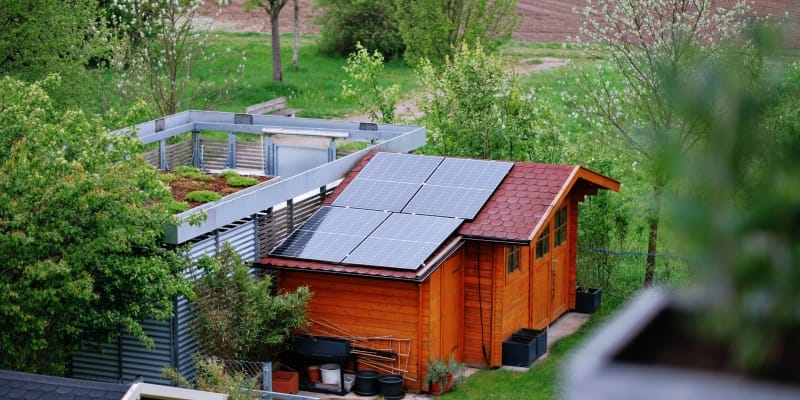
Imagine a world where your business thrives on sustainability and cost savings. Embracing solar energy can turn this vision into reality, particularly for India’s growing retail and manufacturing sectors. The key decision lies in choosing between an on-grid solar power plant and an off-grid solar power plant, each offering distinct advantages and challenges shaped by factors like grid reliability, energy demands, and financial considerations. A clear understanding of these systems is essential for aligning your business goals with long-term sustainability and profitability. This guide explores these options, helping you find the ideal solar solution for your business needs.
In today’s era, where sustainable choices matter more than ever, businesses in India are increasingly opting for solar energy. This trend is driven by the dual goals of reducing carbon emissions and securing reliable power.
For Indian businesses, especially in retail and manufacturing, switching to solar represents both an environmental and financial strategy. Understanding energy needs and the benefits of each system will guide you to the best solar choice. Let us explore the on-grid vs. off-grid systems in detail to help shape your business energy landscape.
On-grid solar systems connect to the public electricity grid, allowing businesses to return excess energy, often earning credits. This setup is ideal for locations with reliable grid access and aims to cut electricity bills. The utility grid acts like a virtual battery, eliminating the need for costly storage solutions.
Both the advantages and disadvantages of on-grid systems are discussed below.
Off-grid solar systems protect your business from outages, providing complete energy independence disconnected from the electricity grid. They store generated power in batteries, making them ideal for remote areas with unreliable or absent grid access.
Both the advantages and disadvantages of off-grid systems are discussed below.
Also Read: Off-grid Solar Plants – ON!
The comparison—on-grid vs. off-grid solar systems—is vital for decisions that align with a business's financial goals and energy needs.
| Aspects | On-Grid | Off-Grid |
|---|---|---|
| Components |
|
|
| Connection to the Grid |
|
|
| Energy Storage |
No batteries needed for cloudy days or nights |
Requires batteries to store excess energy |
| Energy Independence |
|
|
| Reliability |
|
|
| Cost |
Lower Initial costs since batteries are not required |
Higher initial costs due to batteries and additional components |
| Maintenance |
Generally smooth |
Requires regular maintenance for batteries and components |
| Environmental Impact |
Both systems:
|
|
India's solar shift is bolstered by regulations and incentives. These elements guide businesses and individuals in making informed solar investment decisions:
Switching to solar power is a forward-thinking choice for any business, offering substantial benefits from cost savings to enhanced energy independence. The right solar power solution depends on your specific needs, location, and goals. Nantech’s Solar Power Plant solutions in Chennai provide dependable power stability and long-term sustainability. Embrace the transition to cost-effective energy and start your sustainable energy journey with Nantech today. Contact us now.
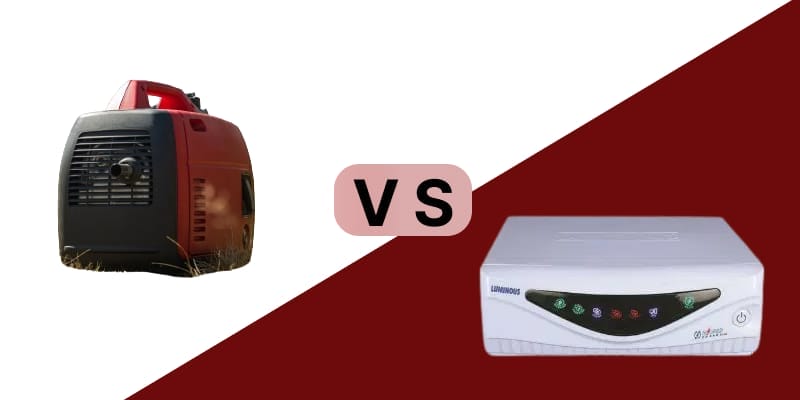
Ever thought about the best way to power your place with the sun’s rays instead of choosing a traditional inverter? At this point, you are faced with a choice that will define your energy freedom and care for the planet. Our blog enlightens you with newfound insights to help you decide wisely as you compare what each inverter does.
Knowing what sets a solar inverter apart from a regular one is key. A solar inverter changes the sun's power into electricity we can use at home or work. Meanwhile, a regular inverter uses stored power from batteries to keep things running when the power goes out.
These inverters are necessary for our modern energy needs, ensuring uninterrupted power for your devices.
Caught in a dilemma to choose between solar and regular inverters? Spotting the main differences between solar and regular inverters can help you make a smart, cost-saving energy choice.
Here’s what makes them different:
Regular inverters, although dependable and versatile, do not have the same green perks and can cost more to run.
Knowing these differences lets you see which inverter fits your energy use, values, and budget. Whether you care more about being green or need reliable power now, your choice will hugely affect your energy use and savings.
Your regular inverter turns grid power into stored energy in batteries, then back into grid power when needed. Solar inverters have a blocker to stop power from returning to the panels at night and a controller to charge batteries right. While regular inverters use grid power, solar ones use sunlight, setting them apart in their work and where they get energy from. Knowing how each inverter handles power can help you pick one that meets your green goals and energy needs.
It is vital to know how solar inverters work. Blocking diodes and charge controllers are two key parts that aid their efficiency and safety.
Blocking diodes ensures that power only goes one way- from the panels to the batteries, so no energy gets wasted at night. This keeps your system safe and efficient.
Charge controllers look after your solar batteries, adjusting the charge to keep them healthy. They protect against overcharging on sunny days and undercharging when it is cloudy, making your batteries last longer.
These parts are the unsung heroes of a solar inverter. They ensure your system uses the sun's energy well and that your batteries stay in good shape.
A solar inverter could be the better choice, especially for saving money and being more efficient. Here is what a solar inverter offers:
Choosing a regular inverter means you can count on it when the power goes out. With a regular inverter, your key appliances will keep functioning even without electricity from the main grid.
These inverters are also easy to set up and look after. They are subjected to rigorous tests to ensure optimum performance, safety, and durability. Also, since they are less complex than their solar counterparts, they are ideal for those preferring easy-to-use devices.
And let’s not forget their ability to work in various settings. For instance, this inverter can still provide the necessary power, regardless of a rainy day or inadequate panel space.
At the end of the day, regardless of your choice, you must review certain aspects before purchasing your inverter.
Picking the right inverter means thinking about a few important points:
Taking your time to think about these points means you can pick an inverter that not only meets your specifications.
Another important aspect is to check if your inverter works with your panels and system parts. Check the inverter's voltage and current against your panels, and look for industry-standard certifications. Also, think about where you install it. Solar inverters need more space because of extra panels and other components. By thinking about these things, you can make sure your inverter choice fits your power needs and the space you have.
Planning your inverter budget? Think about the start-up cost and the chance to save money in the long run.
Solar inverters need more care since they are outside, but they can save you money on bills over time. Regular inverters may be cheaper upfront, but they don't provide the environmental benefits of renewable energy.
Care is key, with solar inverters needing checks each season to keep them working well. As you weigh these points, your decision should show your money and green priorities, leading to a system that supports your power goals well.
Efficiency in solar inverters is about how well they convert power from your panels into usable energy. This efficiency matters because it affects how much power you actually get from your solar system.
There are two main efficiency ratings:
When you compare solar inverter models, look at these efficiency ratings. A model might look good with high peak efficiency, but the weighted efficiency will tell you more about how it works over time and in different situations. This information is key because your inverter won’t always be running in perfect condition.
With the right solar inverter, you will be on your way to harnessing the sun's power better. Ensuring your inverter is set up right and looked after is crucial in working well and lasting a long time.
It is essential to have your inverter put in by professionals for safety and the best working order. A trained technician will connect the inverter to your power system the right way, following local rules and standards.
Regular maintenance, like cleaning and yearly checks, is key to preventing dust accumulation and identifying impending issues. It is important to monitor the performance of your inverter and report any irregularities immediately to prevent further damage and ensure its longevity.
With the proper care, your inverter can be a dependable part of your power system for years.
Changing your regular inverter to a solar one means adding a blocker and a solar charge controller. The blocker stops power from going back to the panels from the batteries when there is no sun. The solar charge controller keeps the charge to the batteries steady, even when the power from the panels changes.
When picking a solar charge controller, you have two options- PWM and MPPT types.
Switching to solar power is not just money-saving but also good for the earth. Solar inverters let you use renewable power, reducing fossil fuels and your carbon footprint. The savings on your power bills and the chance of getting government perks for using renewable power make solar inverters an intelligent money choice.
The power choices you make today are tied to your future carbon footprint and energy costs. A solar inverter opens the door to solar power, matching sustainability goals and cutting your power bills. On the other hand, a regular inverter is a sure thing, giving you power when the grid can't.
Nantech Power Systems Pvt Ltd offers reliable power choices that are just right for your needs. We have years of experience and expertise as reputed inverter manufacturers in Chennai.
Secure your power with our expertise and see a future where power, freedom and caring for the earth go together. Get the right consultation for your power solutions. Connect with our experts.
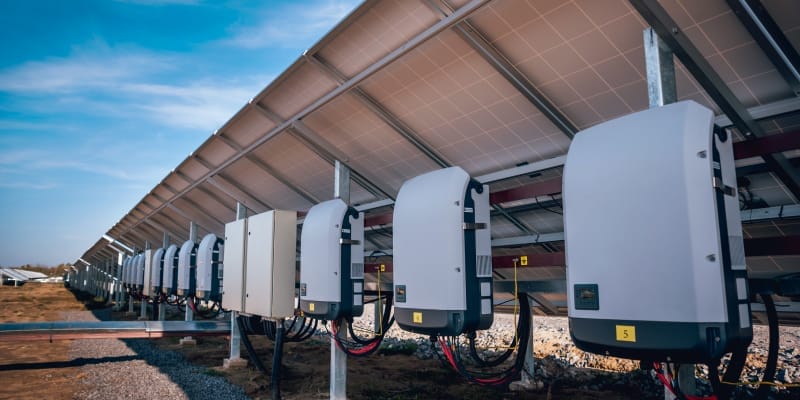
Think of your solar inverter as the heart pumping life into your home's green energy setup. To keep it beating, robust and regular care is vital.
For instance, a routine check on input voltage helps avoid damage to its components because any abnormal voltage spike can spell trouble for the device. However, with a sharp eye on maintenance, you'll keep the energy flowing right and your solar setup paying off.
Your solar inverter requires nurturing to continuously turn sun rays into power for your home or office. If you neglect to address this issue, it could potentially cause your entire system to fail. Be vigilant for signs of failure, and check periodically to intervene before things worsen.
To keep your setup working in perfect condition, keep an eye out for these trouble signs:
Monitor your solar panel's energy consumption to avoid system crashes. Catch any issues early to maintain optimal performance. As always, prevention is key to optimising your solar inverter’s performance. Let’s discuss the preventive steps in detail.
Here's your must-do list to dodge damage and keep things smooth:
These simple but effective maintenance checks ensure a smooth, trouble-free solar setup.
Ensure your inverter is installed in a shady place away from the sun. Adequate space for ventilation keeps it from overheating. While some inverters are designed to regulate the heat automatically, you can also add a gadget to keep track of it in manually operated inverters.
Cleanliness is absolutely essential, even for inverters. Dust off any grime to keep it breathing easy and prevent any clogging.
Give your inverter an overall inspection as often as you can. Look for any cracks, loose pieces, or dirt. Use a soft brush to clean out the dust particles, especially in those nooks and crannies.
Want your inverter to give its all? Get friendly with monitoring software. It's like looking out for your system's health and catching any red flags early.
Keep your inverter's firmware updated. Manufacturers roll out new software to fix bugs and boost performance. Stay current, and you'll keep your inverter smart and sharp.
Stay on top of your solar game with real-time monitoring. This technology can alert you if your inverter faces technical snags, giving you time to tackle the issue before it blows up.
In such cases, you can always seek the help of professionals with the expertise to resolve even the most complex issues.
Although you can rely on this high-end technology, a smooth operation needs both your watchful eye and professional intervention.
Is your inverter malfunctioning? Let the professionals handle it. Solar technicians can identify and fix the issue for a safe and efficient system.
Scheduled professional visits can help identify even minor issues, keep things safe and prevent unnecessary costs or significant repairs. Trained experts have the tools and expertise to care for your solar setup. Therefore, make technical check-ups part of your routine. It's a smart move that keeps your solar energy system delivering optimum results.
With your inverter in expert hands, you can rest easy knowing it'll keep converting those sunbeams into clean energy like a boss.
Take charge of your solar inverter's health with regular check-ups and simple maintenance measures. You can always rely on experts at Nantech Power Systems. We are one of the leading inverter suppliers in Chennai. We have the experience and the right team to handle any curveballs. With Nantech in your corner, you can rest easy knowing your power's in good hands. Let each new day's sun power your dreams for an efficient, energy-smart future.
Reach out to Nantech Power Systems, one of the best UPS dealers in Chennai, for solar inverter maintenance guidance.
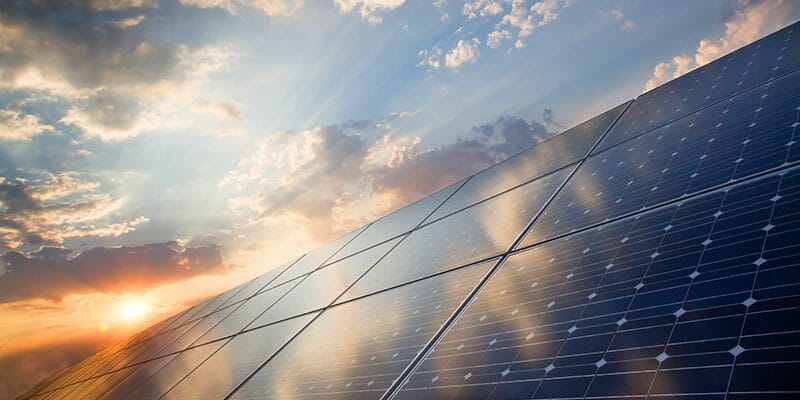
In recent times, there has been a growing fascination with transitioning to solar energy, whether you are a homeowner or a business proprietor. Considering the increase in demand, it is essential to understand that not every solar panel is the same. You must analyse the variations between commercial and residential solar systems to know better about solar panels and their functioning. Whether searching for solar panel suppliers & dealers in Chennai or elsewhere, these distinctions will help you make an informed choice.
Solar systems comprise multiple photovoltaic panels that convert sunlight into electricity efficiently. They provide a pure, renewable energy source that needs minimal maintenance and emits no carbon dioxide. Keep reading as we unravel the fascinating world of solar power and shed light on its unique paths in homes and businesses.
To make an informed decision about renewable energy for your home or business, it is essential to understand several key distinctions. This will help you fully comprehend the differences between commercial and residential solar panels. These distinctions include efficiency, installation, size, and colour. If you are considering installing solar panels on the roof of your commercial structure, consider the following differences:
Power
Commercial solar panels are intended to generate more electricity than residential solar panels. This is accomplished by incorporating a greater number of PV cells in commercial panels. This can be approximately 70 cells or more, whereas only 60-65 cells are found in residential panels. Due to the greater number of cells, the physical dimensions of commercial panels are also greater. This makes it unsuitable for residential use but optimal for commercial applications owing to the ample roof space.
Colour
Residential solar panel systems are available in both black and white hues, while commercial systems are predominantly white. Although white solar panels are employed in residential and commercial settings, people installing them for their homes prefer black panels with black backing. In contrast, commercial clients prefer black panels with a white backdrop.
Installation duration
The installation procedure for commercial and residential solar panel systems involves a roof-mounted racking system secured with bolts. Flat and readily accessible roofs are easy to install. However, a number of factors drag down the procedure while installing commercial systems. These factors include the scale and technical complexities of commercial projects and, most importantly, the need to comply with specific regulations and acquire required approvals. Commercial initiatives have more stringent compliance requirements, causing the approval process to be more time-consuming. After the design has been finalised and the system has been authorised, panel installation becomes simple.
Complexity
Design considerations for commercial solar energy systems are more complex than those for residential systems. This is because commercial systems are larger in space and have a lot of equipment that operates with higher electrical ratings. These contribute to the technical complexities. In addition, local electrical lines must be evaluated carefully to ensure they can manage the solar input from the commercial solar panel system.
Price
Cost represents a significant distinction between residential and commercial solar systems. The cost of solar panels is determined by the power output rather than the system type. Generally, commercial solar systems have higher initial costs but less expense per watt. Commercial systems are likely more costly per panel than residential systems because of their larger dimensions and greater storage capacity. However, the energy production cost per watt is identical for residential and commercial panels.
Efficiency
Powered by a greater number of cells and larger dimensions, commercial solar panels outperform their residential counterparts in terms of energy output. In addition, commercial solar panels are typically more efficient than residential panels, with approximately 18.6% efficiency.
Businesses investigating solar panel systems possess more options when attempting to go off the grid. Commercial properties may mount solar panel systems on their roof, but they also have the option to explore more innovative solutions, such as solar-panelled parking lots and ground installations. In contrast, residential solar systems frequently have fewer installation options due to limitations caused by home size and neighbourhood restrictions. This restricts their installation only to the roof.
The Takeaway
There are significant differences between commercial and residential applications regarding solar panel installation. It is crucial to comprehend these distinctions to arrive at an informed choice when contacting professional solar panels and UPS manufacturers in Chennai like Nantech Power Systems. While both systems have a lot of differences, they operate with the sun's abundant energy, thereby saving pockets and contributing to the environment by reducing global warming. Get in touch with Nantech Power Systems right away!

The steady transition to renewable energy sources has been one of the most noticeable environmental shifts of the last several decades. High pricing and limited supplies have led to a surge in demand for renewable energy sources like solar power. As a result, more and more homeowners are going solar in recent years, and many have taken to searching for reliable inverter battery dealers in Chennai to ensure their solar power system is properly installed and functioning. Industries and corporations have also invested in renewable technologies including wind, biomass, solar, and more out of a need for alternate energy options.
Direct Current power is produced by solar panels by absorbing solar radiation. Direct Current (DC) produced by the solar panels must be changed to Alternating Current (AC) before being utilized by conventional household appliances. That's why there are devices like solar inverters.
Solar Inverters: What is It?
The electricity supplied by solar panels is in the form of direct current (DC), and solar inverters convert this into alternating current (AC) at the proper voltage and frequency. The energy produced by solar inverters may be used either locally in residential infrastructures or sent straight into the commercial power grid for distribution. Selecting the right type of solar inverter is important for optimizing the utility of the produced solar energy.
With the rise in popularity of solar systems over the years, it's crucial to understand how they operate and what characteristics set them apart from one another.
The following are the varieties of solar inverters that are most often seen on the market today:
It is essential to have a knowledge of the function of an inverter in order to fully understand the distinctions between the four. The primary purpose of an inverter is to convert Direct Current (DC) into Alternating Current (AC). With regards to solar power systems, an inverter is crucial because it controls the flow of electricity to the household appliances. Now that we understand what an inverter does, we can dive into the specifics of the various solar inverter options available.
On-grid or Grid-tied Inverter
In solar power systems, on-grid or grid-tied inverters allow for the extra energy to be sent back into the mains power supply. These arrangements are by far the most common in both households and workplaces. When the electricity goes out, they are expected in a way to immediately switch over to the power backup system and disconnect themselves from the grid. With a maximum conversion efficiency of 98% and low minimum starter voltage, they are ideal for use in a wide variety of applications.
One of the most significant benefits of using an inverter that is connected to the grid is the avoidance of the need for batteries. As an alternative, these setups rely on micro or solar inverters to transform the DC power generated by the panels into AC power. The utility grid is used to store any extra power that is created throughout the process, and the customers are given a credit equal to the quantity of energy that is exported. This method is also called "net metering." Having an on-grid connection has several financial benefits, including net metering, higher efficiency rates, and reduced installation equipment expenses.
On-grid solar inverters also have the benefit of being upgradable. You can simply choose the ideal solar inverter for your requirements from the wide variety of options available. However, if the power goes down, a grid-tied system won't work without a battery backup.
Off-grid Inverter
An off-grid system, although being linked to the utility grid, uses solar power to recharge the battery and power the load. It only draws electricity from the grid when the power generated by the solar panels is insufficient to meet the demands of the load or to charge the battery. An off-grid system relies on two things to function properly: a well-thought-out design and an excellent battery system which can supply energy needs even when there's comparatively less sunlight.
There would be no power on dark or cloudy days if there were no battery or other way to store solar energy. The majority of solar energy storage systems for homes not connected to the power grid are designed to charge during the day and discharge at night. These systems may be customized to generate enough electricity throughout the day to meet the demands of a household.
One major drawback of using an off-grid solar inverter is that, if there's gloomy weather for many days, solar power alone may not be enough to meet electrical needs. They are adaptable and may be utilized in any situation. Nevertheless, a battery is required for an off-grid solar inverter to operate.
When it comes to solar inverters, micro inverters are among the most well-liked. This Solar Power System's solar inverters are hardwired to each individual solar panel. They provide a simple plug and play setup and eliminate the need for complicated wiring, making installation a breeze.
Installing solar panels requires a connection to your home's electrical grid, just like any other source of electricity. The drawback of a typical string inverter is that it limits the amount of power that the solar system may generate to that of the least efficient panel. As one panel fails, the others follow suit. Nevertheless, a tiny inverter is set up between each solar panel and the roof. Each solar panel may generate up to its maximum output since each panel comes with its own micro inverter. This means that a micro inverter is more efficient and effective than the traditional string inverters.
Every panel gets the most power possible since there is no weak link in the microinverter system. Also, it makes you safer. As they prevent high-voltage DC from being sent onto the roof, solar panel micro inverters are a more secure option.
Hybrid solar systems
Hybrid solar systems are grid-connected setups that use battery backup. These solar systems may be put together in a variety of different combinations. This solar system collects sunlight throughout the day to use power after the sun goes down. The solar system draws power from the grid and has the capacity to store surplus energy. Batteries may be charged in hybrid systems utilizing less expensive off-peak power. The cost of hybrid systems is much higher than that of standalone or off-grid systems.
Despite their high initial cost, hybrid systems provide users the benefits of both net metering and energy storage in the event of a grid outage. Customers benefit greatly from a constant flow of electricity from a hybrid solar system. Moreover, hybrid systems need significantly less upkeep than traditional diesel-fueled generators.
You can always find a good fit for your needs and budgets among the aforementioned inverters. Prior to purchasing a solar inverter, it is crucial to evaluate and understand your specific energy requirements.
If you're looking for the best solar inverters for your home or business, you can get in touch with Nantech Power System. Our team of experienced professionals will help you identify the best types of solar inverter that fits your needs. Contact us today and let us help you find the perfect solar inverter for you!
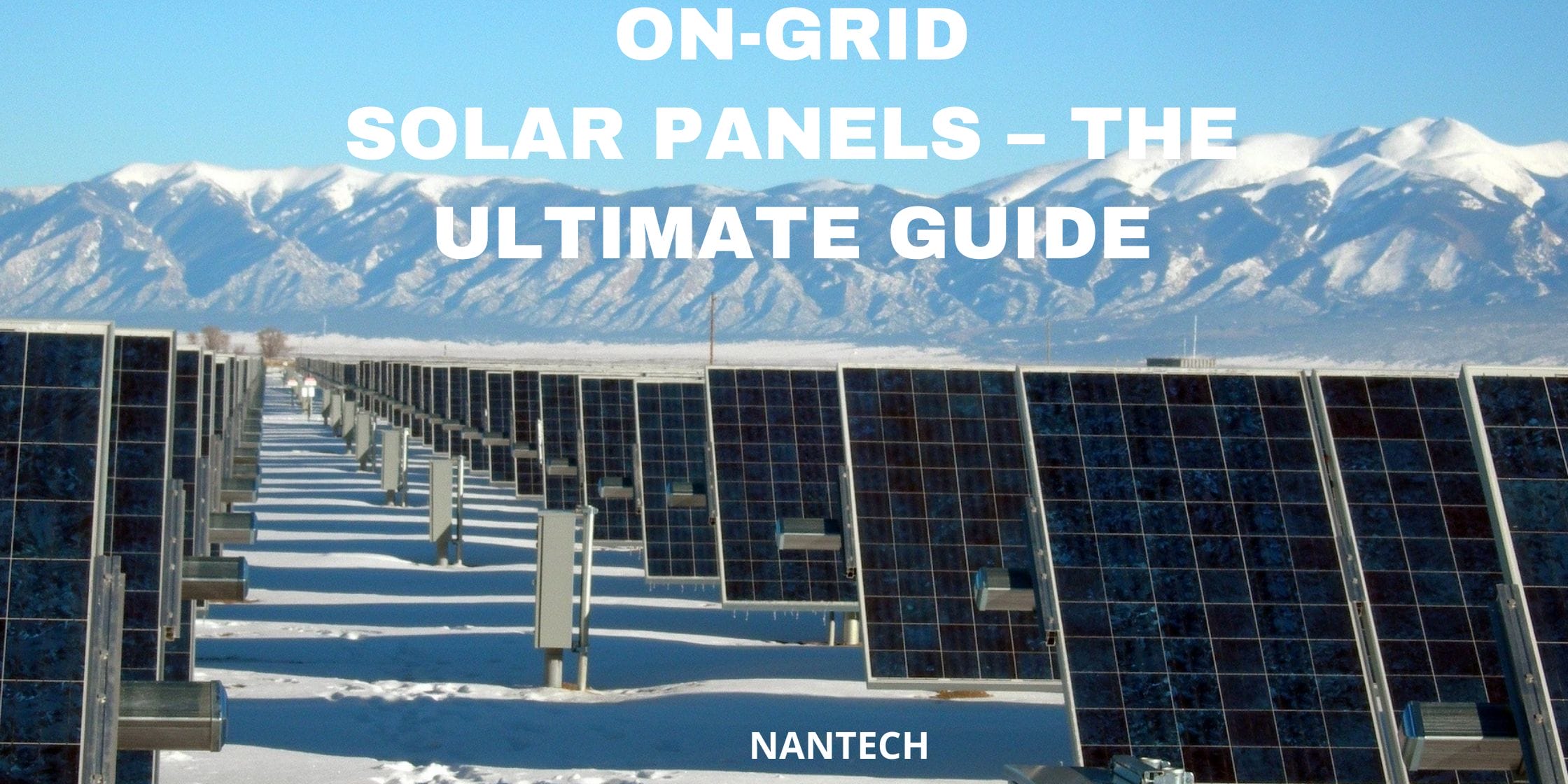
A recent project Mahindra world City is going to be Chennai’s first place, based on environment-friendly principles. It is based on Zero Waste to Landfill Certification which means it is diverting industry waste away from landfills. This leads to a decrease of 115 tonnes of CO2 emissions every month. There are many other ways to minimize environmental damage.This includes investments on more solar, hydro and wind power.
When it comes to Solar power systems, they are divided into three types. On-Grid, Off-Grid, and Hybrid Systems. Nantech has got you covered for in-detailed information about On-Grid Solar System.
On-grid solar power is a system where the generation system is connected directly to the utility grid. The electricity produced through solar systems is routed to the primary utility grid from where the electricity is run through a house and further used for appliances.
These are also known as a grid-tie or grid-feed solar system. On-Grid solar systems are one of the most widely used solar power systems. With new technological advancements, people have started to rely on solar systems, and On-Grid being the most in-demand.
Working of the system
The system works in two ways.
These features make the On-Grid system highly useful and affordable. The solar panels installed on the user's home are tied to the Grid. The panels convert sunlight into direct electricity, also known as Direct Current DC). This current is then stored in a solar inverter. The Solar Inverters then convert Direct Current to an Alternating Current. Alternating Current (AC) makes the power accessible and ready to use for electrical items. The electricity is routed to the utility grid, where it is supplied for day to day use.
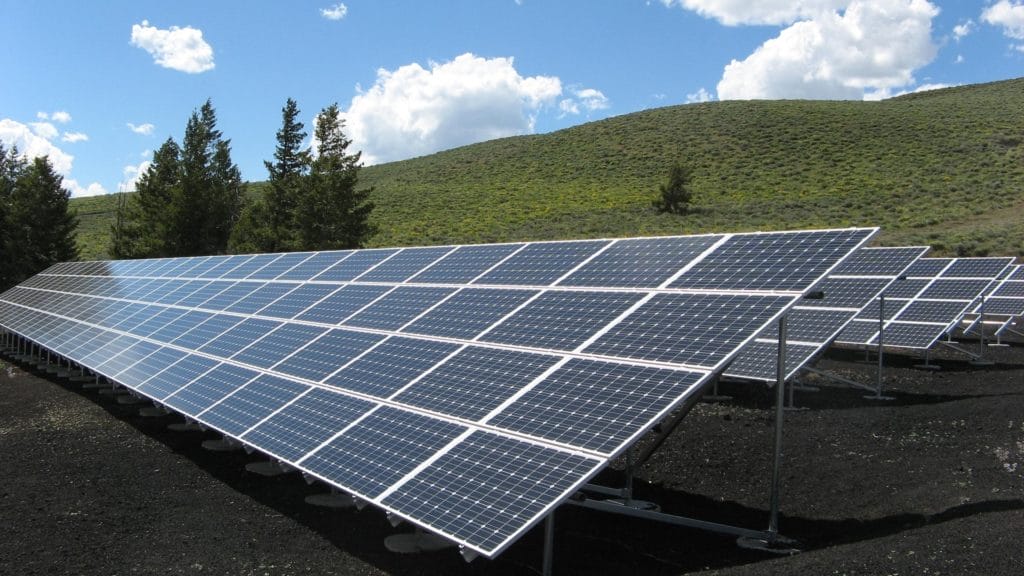
The grid tier inverted additionally regulated the amount of voltage of electricity used for the household requirements since all the collected power is mostly much more than household usage, needs, and is usually higher than it can handle. One of the essential features is the net meter. It is a device that records and measures the energy supplied to the Grid and the energy consumed.
At the end of every month, an outstanding is recorded, and a bill is provided for the electricity consumed. A solar meter is also used to measure the power generated. The converted energy is stored and then used by homes through the main electricity distribution panel. Battery Backup is not a requirement.
Solar power systems are the future of clean, reliable, and renewable power solutions. Setting up a Solar System is valuable for the environment and humanity themselves. Thus, moving forward towards the future with Solar energy is one of the decisions for us.
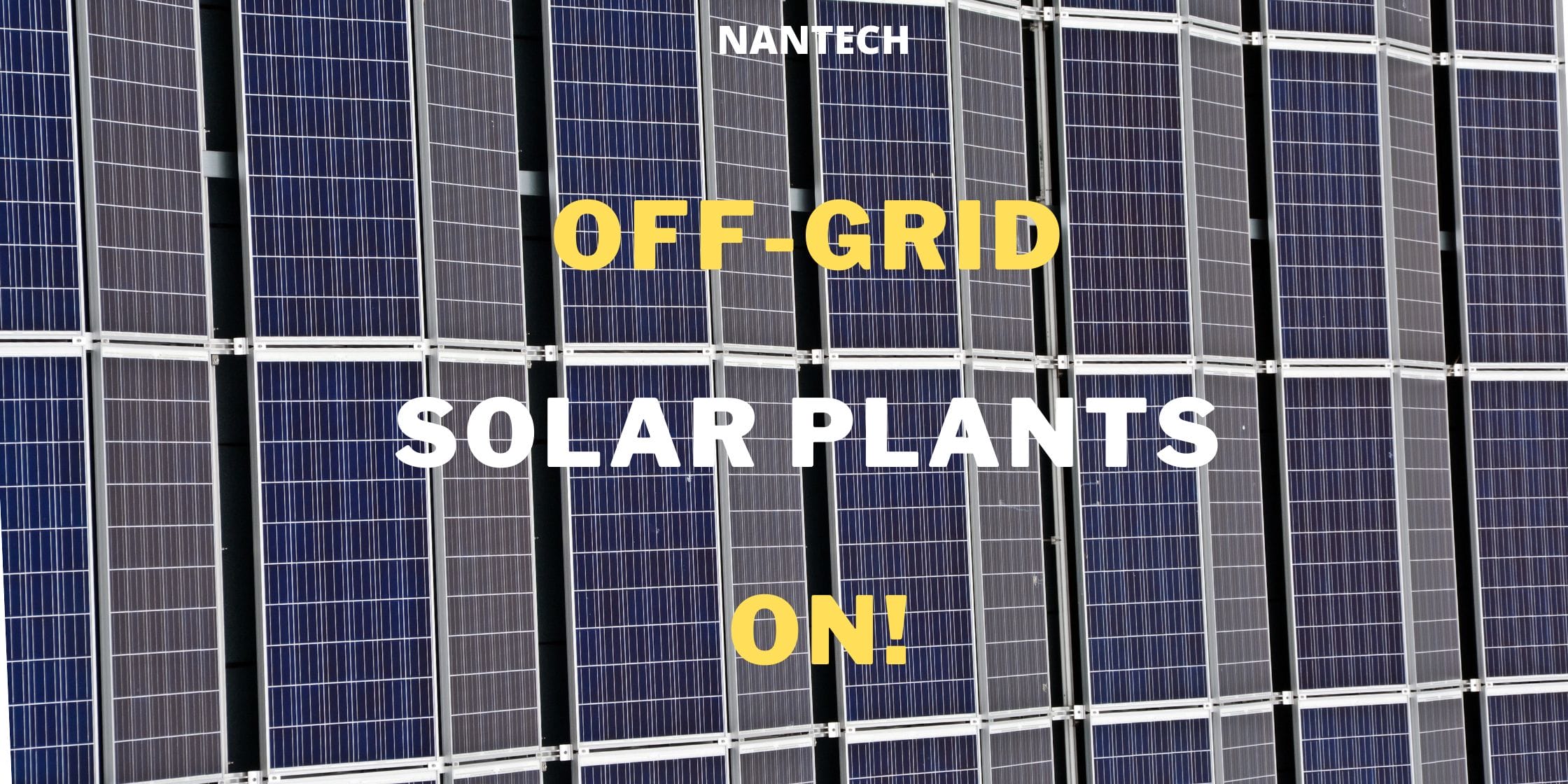
With the continually increasing concerns of global warming, there has been a lot of awareness about using clean energy. Solar energy is one such form of renewable, affordable, and inexhaustible energy that we can extract from nature and, in a way, for nature. However, setting up a whole new solar energy system with many options available can be baffling. Opting for solar energy set up requires a fixed commitment and long-term investment. Therefore, it's necessary to do little homework before choosing the solar plant you wish to install. Solar plants are of two types an on-grid solar plant and an off-grid solar plant. An on-grid solar plant generates electricity and is directly connected to the utility power grid.
On the other hand, the off-grid solar grid does not work in conjunction with the utility grid. Instead, they are connected to batteries, which store the power generated by them. Chennai, being a coastal region, often suffers from gloomy and cloudy days. If an on-grid solar panel is the only source of electricity, there could be times when the consumers will have to suffer from power cuts making an already gloomy day gloomier.
When it comes to such rainy, cyclone-prone areas, using an on-grid solar plant is not an extremely reliable option. To curb this problem, Nantech Power Systems Pvt. Ltd, a company based in Chennai, has got you covered. Having expertise in manufacturing power equipment, this company is like a ray of light to fill your ill-lit days with dazzle and sparkle.
Off-grid solar plants work independently of the grid. They have the following components :
The solar panels absorb solar energy, and the excess energy is stored in the batteries. This stored energy from a previously sunny day can be used when the sun has set or during cloudy days when there is no sun at all. These are self-sufficient power providers in areas where power grids remain unavailable, like in rural and remote areas, where they can provide electricity for a long time or in areas where there are frequent power cuts. Another advantage of an off-grid solar plant is that any mishaps like grid failures or shutting down of grids during stormy weathers do not prevent them from supplying energy since they are independent of the utility grids. Therefore, they are autonomous, unstoppable, and infallible. An additional advantage of using the off-grid solar plant is that you don't have to pay any electricity bill if you are using only one energy source that is of your solar plant.
One disadvantage of the off-grid solar plant is that if there are abnormally dark days in a row, the energy stored in the battery may get exhausted, limiting its use. Another disadvantage is that they are costlier to install. However, one should note that the number of benefits an off-grid solar plant has overridden the costs of installing it. Thus, by choosing it, you are self-sufficient and fulfilling your duty as a responsible inhabitant of the planet.
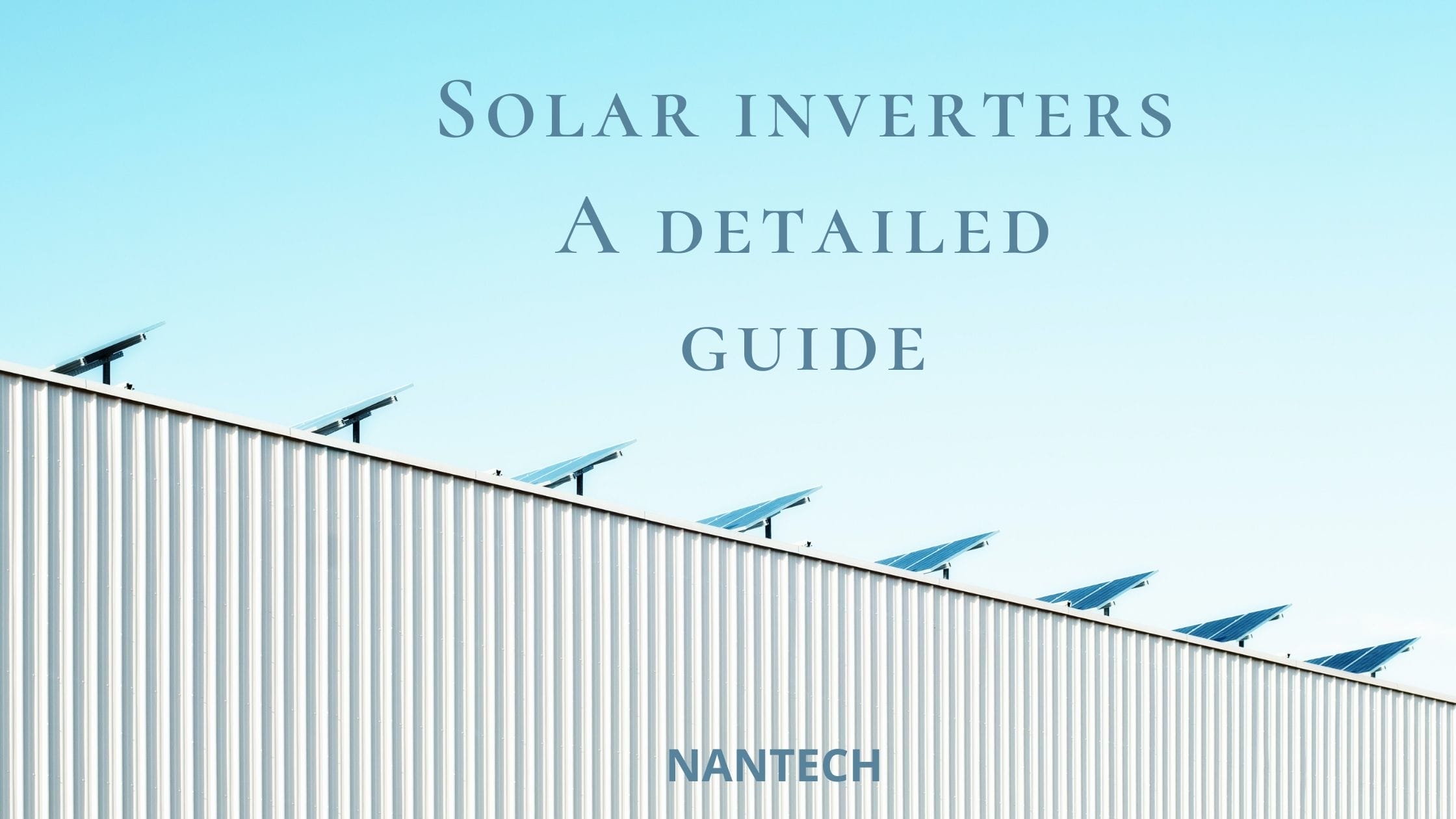
Solar Power is the conversion of energy from sunlight to electricity. It is one of the essential sources of renewable energy. It uses radiant light and heat from the sun that is harnessed using technology devices such as solar heating and cooling systems, solar thermal, photovoltaics, concentrating solar power, and converts it into electricity. Solar power is one of the cleanest and reliable forms of renewable energy. The devices used to collect the energy are explained in simple terms below.
This is a process of converting light into electricity using semiconductors that exhibit the photovoltaic effect. This effect is used commercially for electricity generation and as photosensors.
These generate power by using mirrors or lenses to gather the sun's energy onto a receiver and further drive them to traditional steam turbines or engines to create electricity.
Collect thermal energy from the sun to provide hot water, air conditioning, pool heating for resident or commercial usage.
Solar Inverters are a type of electrical converter which converts direct current (DC) output of a photovoltaic panel into a utility frequency alternating current (AC) that can be used for electrical grids, which can be used by local, private networks. Solar Inverters use MPPT (Maximum Power Point Tracking) to get to the maximum possible power from the photovoltaic array. The purpose of MPPT is to sample the cells' output and determine a resistance/load to obtain maximum capacity. Inverters are also referred to as the brains of the entire solar power system. One of the components includes the battery storage system. Stored batteries can be used in the times when the sun goes down during evening and night time.
Solar Inverters are divided into three different types.
Stay tuned till the end for some detailed guidance on solar inverters and their types on Nantech.
String Inverter
A string inverter is one of the popular devices used among households. It works well with All Home appliances. It converts Direct Current from solar panels to Alternating current electricity/power. Multiple strings are connected to produce electricity.
String Inverters are also known as Sine Wave Inverters. These can be paired with power optimizers.
Solar Micro Inverter
Solar Inverters used to operate with a single PhotoVoltaic model is known as Solar micro-inverters. These micro converters convert Direct Current(DC) output to alternating currents(AC). It is used for parallel connection of various units (multiple, Independent) because of its design. Micro Inverters are small in size and are plug-in and play a kind of device. These are connected in parallel to each other and then to grids while producing grid-matching Alternate Current(AC) directly at each solar panel bank.
Central Inverter
Just as the name suggests, Central Inverters are connected to form a standard combined inverter that converts the power to an Alternating current (AC). These are usually bigger and than String Converters. Thus, they are only suitable for covering large areas and not for primary household usage. Central Inverter can handle up to 500KW per enclosure.
Solar Inverter gives the benefit of using solar energy without hefty bills of electricity from our power supply. Solar Energy is the most acceptable renewable energy solution for this world full of electronic devices that needs to be charged before use. Thus, using electricity from solar panels and solar inverters might be the best renewable solution one can ever think of.
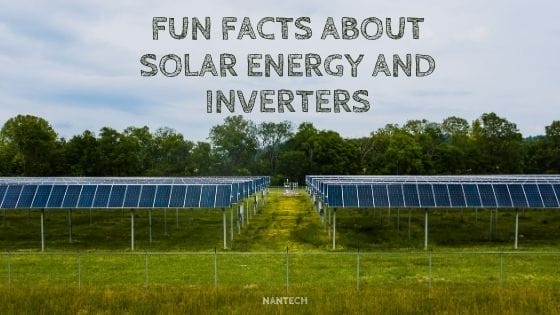
Let's start with the fact that Solar inverters are among the most efficient machines built by man, giving up to 97% efficiency in the best inverter and under ideal weather conditions. When we say efficiency we mean, the solar inverter's capacity to convert all the energy it receives from the sunlight into the alternating current it supplies to the devices it is connected to. The amount lost is mainly due to converting the direct current received from the solar panel into the alternating current supplied.
The solar inverter can be referred to as the system's brain as it has 'Maximum power point tracking ability,' which is a feature of genius. It is basically a sensory system that can detect when the battery is connected. The inverter itself is full storage capacity and then breaks the circuit stopping any more from the photovoltaic solar panel. This is an essential protective feature of the solar inverter because it helps prevent an acute decrease in efficiency and protects from any physical mishap.
Grid-connected solar inverters are large scale solar systems where All the panels supply DC to the grid where the main inverter structure would convert all the DC into AC and supply residential and office buildings. Though a little pricey to install, this system will give huge returns in the long term due to its high efficiency and eco-friendly nature. These solar power plants can last for more than 40 years, after which some machinery might need to be replaced. This becomes important when you know that 'One hour of total sunlight hitting the earth is equivalent to one year's worth of energy for the planet.' It is the cheapest energy source as there are no costs to obtain the raw material. For example, you need coal mines to dig up coal.
Many people are under the impression that Solar energy is not a viable source because it is weather dependent, i.e., it will be useless on cloudy days or winter. As a matter of fact, 'Solar energy does not need direct sunlight but only the warm temperature generated by sunlight.' You do not particularly feel cold on cloudy days, you can take cloudy days in the summer as well, but the solar inverter will work just as well.
For you enthusiastic and nature-loving homeowners, here are a few facts helping the cause of solar energy:
So, what are you waiting for? Go ahead and buy a solar inverter to save both your money and the environment!
Happy shopping!